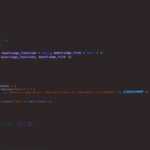Start by combining static and dynamic techniques to dissect harmful programs effectively. Static examination involves scrutinizing code without execution, revealing structural patterns, embedded resources, and suspicious strings. This phase lays the groundwork for targeted behavioral observation during dynamic testing, where the sample runs in a controlled environment to monitor real-time interactions with system components.
Reverse engineering plays a pivotal role in decoding obfuscated routines and encryption layers within hostile executables. Employ disassemblers and debuggers to unravel functionality step-by-step, clarifying how payloads activate or propagate. Integrating these insights builds a comprehensive profile that anticipates potential threats and informs mitigation strategies.
Systematic application of these methodologies enhances clarity when interpreting complex attack vectors. Dynamic tracing exposes runtime anomalies such as unauthorized file modifications or network communications, while static inspection reveals concealed command-and-control mechanisms. This layered approach refines detection accuracy and deepens technical comprehension of adversarial tools.
Malware analysis: understanding malicious software
For precise identification and mitigation of harmful code, combining static and dynamic examination methods is indispensable. Static engineering techniques involve dissecting executable files without running them, allowing researchers to uncover embedded instructions, suspicious strings, and structural anomalies. This approach provides a foundational map of the program’s architecture, revealing encryption layers or obfuscation strategies that conceal harmful intent.
Dynamic scrutiny complements static procedures by executing the specimen within controlled environments like sandboxes or virtual machines. Monitoring runtime behaviors–such as file system modifications, network communications, and API call sequences–enables detection of concealed payload activations or evasive maneuvers designed to bypass traditional defenses. Integrating both perspectives yields a comprehensive profile of the threat’s operational mechanisms.
Technical exploration of intrusive code through dual methodologies
Static inspection relies heavily on reverse engineering tools that disassemble binaries into assembly language or higher-level representations. Analysts employ debuggers and decompilers to trace control flow graphs and pinpoint logic anomalies indicating unauthorized data exfiltration attempts or privilege escalations. For example, examining polymorphic variants requires identifying consistent decoding routines amid bytecode transformations.
Runtime evaluation facilitates observation of temporal behaviors unreachable via static means alone. Memory forensics can capture transient artifacts during execution phases while dynamic instrumentation frameworks record system call patterns that may signify lateral movement across networks. A notable case study involved dissecting ransomware samples where dynamic triggers activated encryption modules only under specific time conditions, eluding static detection initially.
The synergy between these investigative approaches supports hypothesis-driven experimentation: analysts formulate initial assumptions based on code structure and iteratively refine conclusions through behavior monitoring. This methodology mirrors empirical scientific practice where controlled tests validate preliminary insights. Incorporating blockchain telemetry data further enriches understanding by correlating transactional anomalies with potential exploitation vectors embedded in digital contracts or decentralized applications.
- Static tools: IDA Pro, Ghidra, Radare2
- Dynamic platforms: Cuckoo Sandbox, REMnux, Sysinternals Suite
- Behavioral indicators: unusual network ports usage, persistence mechanisms
This layered investigative framework empowers security professionals to dissect complex threats systematically and develop targeted countermeasures informed by rigorous technical evidence rather than heuristics alone.
Static Analysis Techniques Overview
Begin by extracting the binary without execution to prevent unintended side effects. Static evaluation relies on dissecting the program’s structure, code segments, and embedded resources to expose hidden functionalities. Tools such as disassemblers and decompilers facilitate reverse engineering by converting executable code into human-readable assembly or higher-level representations.
Comprehensive static inspection involves examining headers, import/export tables, and embedded strings for indicators of suspicious behavior. Unlike dynamic methods that observe runtime actions, this approach provides a snapshot of the entire system before activation, enabling early identification of potential threats without risk to the host environment.
Key Approaches in Static Examination
Code Disassembly and Decompilation: Utilizing disassemblers like IDA Pro or Ghidra allows analysts to translate machine instructions back into assembly language. This reveals control flow patterns and function calls crucial for detecting obfuscated routines or encryption loops designed to hide harmful intent.
Signature-Based Detection: Comparing file characteristics against databases of known harmful patterns helps quickly flag recognized threats. However, reliance solely on signatures faces limitations against novel or polymorphic variants that mutate their codebase frequently.
- String Analysis: Searching for URLs, IP addresses, or suspicious API names within binaries can uncover communication attempts or privileged operations planned by the code.
- Control Flow Graphs (CFG): Constructing CFGs assists in visualizing program logic paths, highlighting irregular jumps or loops indicative of tampering or evasive maneuvers.
Data Flow Tracking: Mapping how information propagates through variables and registers exposes injection points or unexpected data manipulations. This method aids in hypothesizing payload delivery mechanisms without executing the entity.
Integration with cryptographic analysis tools can detect embedded wallets or keys concealed within code segments–a valuable practice when inspecting software targeting blockchain infrastructures. By validating checksum consistency and entropy levels across sections, one identifies packed components intended to resist straightforward reverse engineering efforts.
The combination of these methodologies allows researchers to formulate hypotheses regarding intent and potential impact before deploying dynamic evaluations. Pursuing static scrutiny first reduces risk while paving the way for targeted behavioral experiments that confirm theoretical models about operational mechanics within digital threats.
Dynamic Behavior Tracing of Malicious Executables
To effectively capture the real-time actions of harmful code, dynamic tracing techniques should be implemented alongside static examination methods. By executing the program in a controlled environment such as a sandbox or virtual machine, one can observe runtime interactions including file modifications, network communications, and process injections. This approach reveals behavior patterns that static code inspection might miss due to obfuscation or encryption layers. For example, analyzing ransomware during execution uncovers its specific encryption routines and key exchanges with command-and-control servers, providing actionable intelligence for mitigation.
Reverse engineering through step-wise debugging complements dynamic observation by allowing analysts to manipulate instruction flows and monitor register states at critical points. Unlike purely static disassembly, this method exposes conditional branches triggered only under certain runtime conditions. A notable case study involved tracing a banking trojan whose payload remained dormant until particular system APIs were called; dynamic instrumentation enabled identification of these triggers and assisted in crafting effective detection signatures.
Methodologies and Tools for Dynamic Investigation
Key tools facilitating live behavioral tracking include system call monitors, API hooking frameworks, and memory analyzers. Utilizing these utilities permits detailed logging of interactions between the executable and operating system components. For instance:
- Strace: captures low-level syscalls on Unix-like systems revealing file I/O and network access;
- Procmon: provides comprehensive monitoring of registry keys, file system activities, and process threads on Windows;
- Dyninst: supports dynamic binary instrumentation useful for inserting probes without stopping execution.
Combining these instruments helps form a layered view where temporal sequences of operations are mapped out precisely. Experimental setups often involve feeding crafted inputs to provoke latent functionality while recording all side effects, enabling the construction of detailed behavioral profiles.
The integration of dynamic tracing with static reverse engineering fosters deeper insight into complex threats that deploy anti-analysis mechanisms such as code packing or virtualization checks. Experimentally validating hypotheses about code paths through runtime feedback loops enhances confidence in conclusions drawn from partial data sets. Moreover, understanding interaction patterns aids in designing resilient blockchain-based security protocols capable of detecting anomalies generated by unauthorized program behaviors within decentralized networks.
Identifying Code Obfuscation Methods
Effective identification of code obfuscation requires combining static and dynamic reverse engineering techniques to uncover concealed logic within hostile programs. Static examination reveals structural anomalies such as opaque predicates, control flow flattening, and junk code insertion that complicate the program’s readable structure. Dynamic tracing complements this by exposing runtime behaviors hidden through encryption or self-modifying instructions, enabling analysts to pinpoint obfuscation layers designed to evade detection.
Common obfuscation strategies include instruction substitution, where legitimate commands are replaced with functionally equivalent but less recognizable sequences; control flow alterations that reorder or loop execution paths unpredictably; and string encryption that masks critical data until execution decrypts it in memory. Each technique aims to thwart signature-based detection and reverse engineering efforts by increasing analytical complexity without changing functional output.
Practical Approaches to Detect Obfuscated Constructs
Static inspection tools such as disassemblers and decompilers facilitate identification of anomalous patterns like excessive use of indirect jumps or redundant calculations that serve no operational purpose beyond confusing analysis. Analysts often leverage entropy measurements on binary segments; unusually high entropy may indicate encrypted or packed code regions requiring unpacking before further investigation. Additionally, symbol stripping and misleading debug information can be indicators of intentional code concealment.
Dynamic instrumentation frameworks enable monitoring of system calls, memory allocations, and API invocations during execution. By observing unexpected behaviors–such as frequent context switches, unusual timing delays, or self-modification–investigators can infer the presence of anti-debugging or anti-virtualization mechanisms embedded within the hostile entity. Controlled execution environments allow methodical triggering of these defenses for detailed behavioral mapping.
Advanced case studies illustrate how layered obfuscation intertwines multiple methods: for example, ransomware samples employing polymorphic engines combined with virtual machine-based protection require iterative static unpacking followed by dynamic sandboxing to unravel their inner workings. Similarly, cryptojacking binaries often use fragmented payloads stitched together at runtime through complex loader routines designed to resist conventional pattern matching.
A systematic workflow integrates hypothesis-driven experiments with iterative refinement: begin with baseline static scans to map out suspicious structures; apply entropy analysis and heuristic filters for potential packing; proceed with controlled dynamic tracing focusing on suspected entry points; finally, reconstruct simplified logic models correlating observed behavior with extracted code fragments. This process transforms initial obscurity into actionable intelligence crucial for threat mitigation and forensic attribution.
Using sandbox environments safely
To ensure secure experimentation with harmful code, deploy isolated sandbox environments that replicate target systems without risking operational infrastructure. Virtual machines or containerized setups provide controlled spaces where dynamic execution reveals behavioral patterns, while preventing unintended propagation. It is critical to configure network segmentation and restrict permissions to avoid escape vectors, as certain threats exploit vulnerabilities to bypass containment.
Combining static inspection and runtime observation enhances the depth of reverse engineering. Static methods involve disassembling binaries and analyzing embedded instructions or strings without execution, highlighting potential indicators of compromise. Conversely, dynamic techniques capture real-time interactions such as file system changes, registry modifications, or network communications during code execution within the sandbox. Cross-validating these approaches yields a comprehensive profile of the hazardous entity.
Best practices for safe sandbox utilization
Implement layered monitoring tools capable of detecting evasion tactics frequently employed by advanced threats designed to identify virtualized conditions. For instance, time-based checks or hardware fingerprinting can mislead analysts if unnoticed. Introducing randomized environmental variables helps counteract such anti-analysis strategies by simulating authentic user behaviors and system states.
Regular updates of analysis platforms are necessary to maintain compatibility with newly emerging payloads and obfuscation techniques. Incorporate automated reporting frameworks that document observed artifacts systematically for subsequent forensic examination. A practical example includes correlating API call sequences with known attack signatures stored in threat intelligence databases to accelerate identification processes.
Consider integrating blockchain verification mechanisms when handling cryptographic components within suspicious code samples. Immutable ledgers can track provenance and alterations in dataset versions used during evaluation, enhancing transparency and reproducibility of findings. This approach supports collaborative research efforts by providing verifiable audit trails crucial for advancing collective knowledge in combating hostile digital constructs.
Conclusion: Extracting Indicators of Compromise
Effective extraction of indicators of compromise requires a dual approach combining static and dynamic engineering techniques. Static examination reveals embedded signatures, such as unique byte patterns and code anomalies, while dynamic observation uncovers runtime behaviors including unexpected network calls or anomalous process creations. Together, these methodologies provide a comprehensive framework to decode and reverse engineer intrusive programs with precision.
Advanced reverse engineering workflows enable the identification of subtle artifacts–like obfuscated command-and-control addresses or polymorphic encryption routines–that evade conventional detection. Integrating behavioral telemetry from sandbox environments with static dissection accelerates the discovery of novel attack vectors and persistence mechanisms embedded in hostile executables.
Technical Insights and Future Directions
- Hybrid Analysis: Combining static signature extraction with dynamic execution traces forms a resilient detection model capable of adapting to evasion tactics such as code packing or runtime mutation.
- Automation through Machine Learning: Leveraging AI models trained on reverse engineered datasets can expedite indicator harvesting by highlighting atypical control flows and data manipulation patterns automatically.
- Blockchain Forensics Integration: Correlating extracted indicators with distributed ledger transactions opens new avenues for tracking illicit fund movements tied to compromised infrastructure.
- Continuous Engineering Feedback Loops: Iterative refinement of analysis pipelines based on emerging threat signatures ensures sustained relevance against evolving adversarial software architectures.
The trajectory points toward increasingly sophisticated tooling that not only dissects hostile codebases but also anticipates their adaptive strategies through predictive modeling. Encouraging experimental validation within controlled environments cultivates deeper insights into underlying exploitation frameworks. By methodically probing suspicious executables, analysts build robust intelligence layers that significantly enhance incident response accuracy and speed.
This systematic fusion of reverse engineering rigor with automated heuristics sets the stage for future developments where proactive identification supersedes reactive containment–transforming compromise indicators from reactive alarms into actionable foresight within cybersecurity ecosystems.








